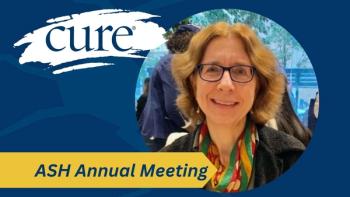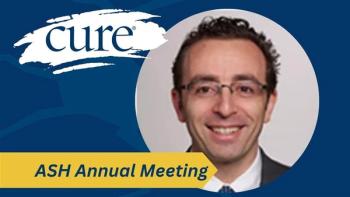
‘Incredible’ That a One-Time Infusion of CAR-T Cell Therapy Induces Durable Responses in Acute Lymphoblastic Leukemia
Although recent data show how promising a single-infusion of a specific CAR-T cell therapy may be for patients with acute lymphoblastic leukemia, an expert from the Moffitt Cancer Center notes that more research is needed for those deemed too ill to receive the treatment.
The use of KTE-X19, a novel CAR-T cell therapy, was associated with a significant clinical benefit in heavily pretreated adults with acute lymphoblastic leukemia (ALL), according to findings presented at the 2021 American Society of Clinical Oncology (ASCO) Annual Meeting.
After a median-follow-up of 16.4 months, a median overall survival (time that a patient with cancer is still alive) had not yet been reached in patients who responded to treatment.
However, the drawback is not everyone is healthy enough to receive treatment with CAR-T cell therapies, such as KTE-X19.
“We're going to have this incredibly promising therapy that's going to work, but we're going to be excluding around 15-20% of patients simply because they're going to be too ill by the time you know that need for CAR-T cell therapy emerges,” said lead study author Dr. Bijal D. Shah, an associate member in the Department of Malignant Hematology at Moffitt Cancer Center in Tampa, Florida, in an interview with CURE®.
Although there is that drawback, Shah explained that the results of this trial are significantly encouraging and exciting for patients.
“Now we're finally given the opportunity to see it and celebrate it in acute lymphoblastic leukemia, where the journey started,” he said.
Transcription:
What it reinforces to me, and I think what it reinforces for patients very specifically, is the need to try and integrate the CAR-T cell therapy earlier in the disease course. And that's really the take home message. I think we have to find a way to bring CAR T to patients before they’re critically ill. If we try to do that, at that point – and again, with ALL, we have much less of a buffer, right? You know, for a large cell lymphoma patient, yeah, you can probably carry them through because the therapy is not quite so toxic. And again, because these aggressive lymphomas are not always necessarily growing, you know, leukemic phase right, taking over the bone marrow space and limiting the ability to develop meaningful immune response against infections. But ALL that is the case, right? We can expect these patients will have been heavily pretreated, will have some history of fungal pneumonia and other atypical infections that are extraordinarily difficult to treat. And so we have to find a way to integrate this therapy before we find ourselves in that situation. And I think that for me is one of the key takeaways, as it relates to a weakness for CAR-T cell therapy. If we can't find a way to integrate it earlier then I think we're going to continue to see this, we're going to have this incredibly promising therapy that's going to work, but we're going to be excluding around 15-20% of patients simply because they're going to be too ill by the time you know that need for CAR-T cell therapy emerges. The second takeaway message is it works. You know, I think that if we ignore that, then we ignore all the excitement, enthusiasm, that really belies this therapy. I mean, it is incredible that a one-time infusion of CAR T cells was sufficient to induce deep and really durable responses for these patients. We've seen it in mantle cell lymphoma, diffuse large B-cell lymphoma, follicular lymphoma, again, I can go on down the list. And now we're finally given the opportunity to see it and celebrate it in acute lymphoblastic leukemia, where the journey started.
For more news on cancer updates, research and education, don’t forget to





